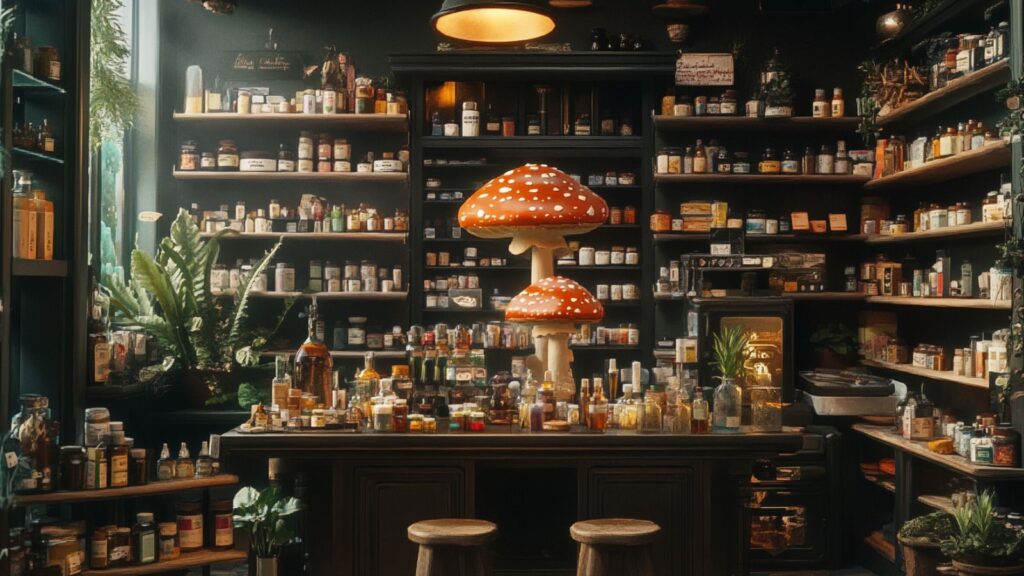As a first responder, Nick Watchorn had seen many terrible things in the course of his career. But the massive shooting of April 28, 1986 in Tazmania, Australia, completely shook his handle on reality. Now Nick is part of the experimental studies on MDMA psychedelic therapies for PTSD treatment.
The Port Arthur Massacre, which occurred at a popular tourist site, left 35 dead and wounded 23 others. In terms of dealing with their own trauma, first responders were taught to “stay strong.” Equipped only with this attitude, Watchorn did not have any tools to emotionally process the event, and suffered thereafter from Post Traumatic Stress Disorder (PTSD).
Twenty Years with PTSD
It wasn’t just the horror of the event. And, it wasn’t just the memories that haunted him, and woke him in the middle of the night with sweats and a racing heart. It had reshaped his entire worldview. After experiencing the worst side of humanity, he said he lost trust in people, knowing what they were capable of. Likewise, the inability to release an experience so wholly wrapped in fear made him terrified to try anything new. He lived in that fear and mistrust for 20 years, just trying to get by with alcohol, antidepressants, and reckless behavior. He also went to therapy, but his PTSD symptoms persisted.
Nick finally experienced relief from his PTSD while partaking in a Phase III clinical trial conducted by The Multidisciplinary Association for Psychedelic Studies (MAPS). MAPS spearheads research to study the possibilities of MDMA for PTSD sufferers, like Nick. Nick had 3 trials sessions. Taking an MDMA pill at the beginning of each, he then received psychotherapy treatment from Stephen Eric Sienknecht, Psy.D. While the effects of regular therapy sessions had dissipated within hours, these MDMA-induced sessions had lasting effects. Namely, he no longer feels PTSD symptoms. After 20 years, Nick feels free.
Street MDMA vs Medical MDMA
The common party drugs known as MDMA, or “Ecstasy,” is currently classified by the Drug Enforcement Agency (DEA) as a “Schedule I drug.” The substances that fall into this category are considered to have no medical use, and a high potential for abuse. Because of its illegality, MDMA consumers must buy it on the so-called black market. Accordingly, it is almost impossible to find the substance in pure form. Ecstasy found on the street can contain a variety of other substances, usually meant to keep one awake longer–like pain killers, caffeine, ketamine, or even amphetamines. Some of the pills don’t even contain any MDMA in them at all.
The point is – don’t think you can just call up your local drug dealer, order some “E” and resolve all of your traumas. Rather, the FDA has allowed MAPS to conduct clinical trials to administer MDMA in its pure form, which as we established, is hard to come by out there. Also, the subjects are not just sent on their merry way after taking the drugs, as they often are with legal prescription opioids and antidepressants. They must take the pills in the presence of psychotherapists. They stay with the patients throughout their entire “trip,” which can last 6-8 hours, or even overnight. The psychotherapists then prompt the patients to process their traumatic experiences in a new way. But how does that all work? Hold on, we’ll get there.
What is PTSD?
When most people hear PTSD, they think war veterans. That’s one group that has historically suffered from PTSD, without much success in alleviating their pain. And it’s easy to imagine, at least, how utterly overwhelming such an experience as war must be. There are different kinds of experiences however, war being one of them, that can trigger the brain to go into survival mode; that “fight or flight” thing your bio teacher always talked about. Its focus is to keep you alive – first. Thus, it puts the emotions aside for later. The emotions are usually too intense for the brain to process at one time anyway.
But the traumas that PTSD patients experience are so potent that they are difficult to process later, even 20 years later, as in Nick’s case. Instead, an emotional attachment to the memory continues to evolve, as well as a reiteration of fear. It becomes nearly impossible to control one’s thoughts, emotions, or physical symptoms. According to Nick’s psychotherapist, Psy.D Sienknecht, PTSD can even be life-threatening, or at the very least, completely debilitating.
MDMA for PTSD, why does it work?
MDMA basically does two things to the brain. First, it increases activity in the prefrontal cortex, which is responsible for creativity, planning, and critical thinking. It also decreases activity in the amygdala, which is responsible for fear response. Sienknecht describes this dual effect as a “window of tolerance.” In other words, the brain can re-experience the memory of traumas, but in a different way. A way that doesn’t cause re-traumatization by a fired amygdala.
MAPS published the results of Phase II clinical trials in a medical journal. In the Phase II trials, PTSD-affected subjects took MDMA and thereafter received psychotherapy treatment, just as Nick did. They revisited their traumatic memories, experiencing intense pain and anxiety, but with one key difference. They were able to remain emotionally engaged because of the MDMA. The study showed that 58% of participants no longer had PTSD after the trial, and 68% no longer had it a year later. This proof of effectiveness allowed the study to pass to Phase III, which Nick was a part of.
MAPS aims to prove that MDMA has medical and therapeutic benefits for patients with PTSD, like Nick. If they do, it may become the first Schedule I drug that the DEA reclassifies. There are other anxiety disorders, and medical conditions that psychedelics such as MDMA can potentially treat. MAPS, and other institutions around the world, recognize their power to heal trauma–in general. We await to see what other revelations MAPS, and organizations like them, will bring us, as they discover new ways of treating some of the biggest issues plaguing human beings today.
Contributor | Clara Samuels













